Bear Market 2022: Where is the Bottom?

If there's anything positive to say about the first half of 2022, it's that the bear market is running on an accelerated schedule.
What's the silver lining in all that?
It's quite possible that the end of the bear market could occur faster than many expect as well.
Consider...
- In prior bear markets, the S&P 500 fell 20%.... by an average of 245 days.
- For our 2022 bear market, the S&P 500 fell 20%... in just 161 days.
That's not to say the indexes couldn't fall further from here (more on that below).
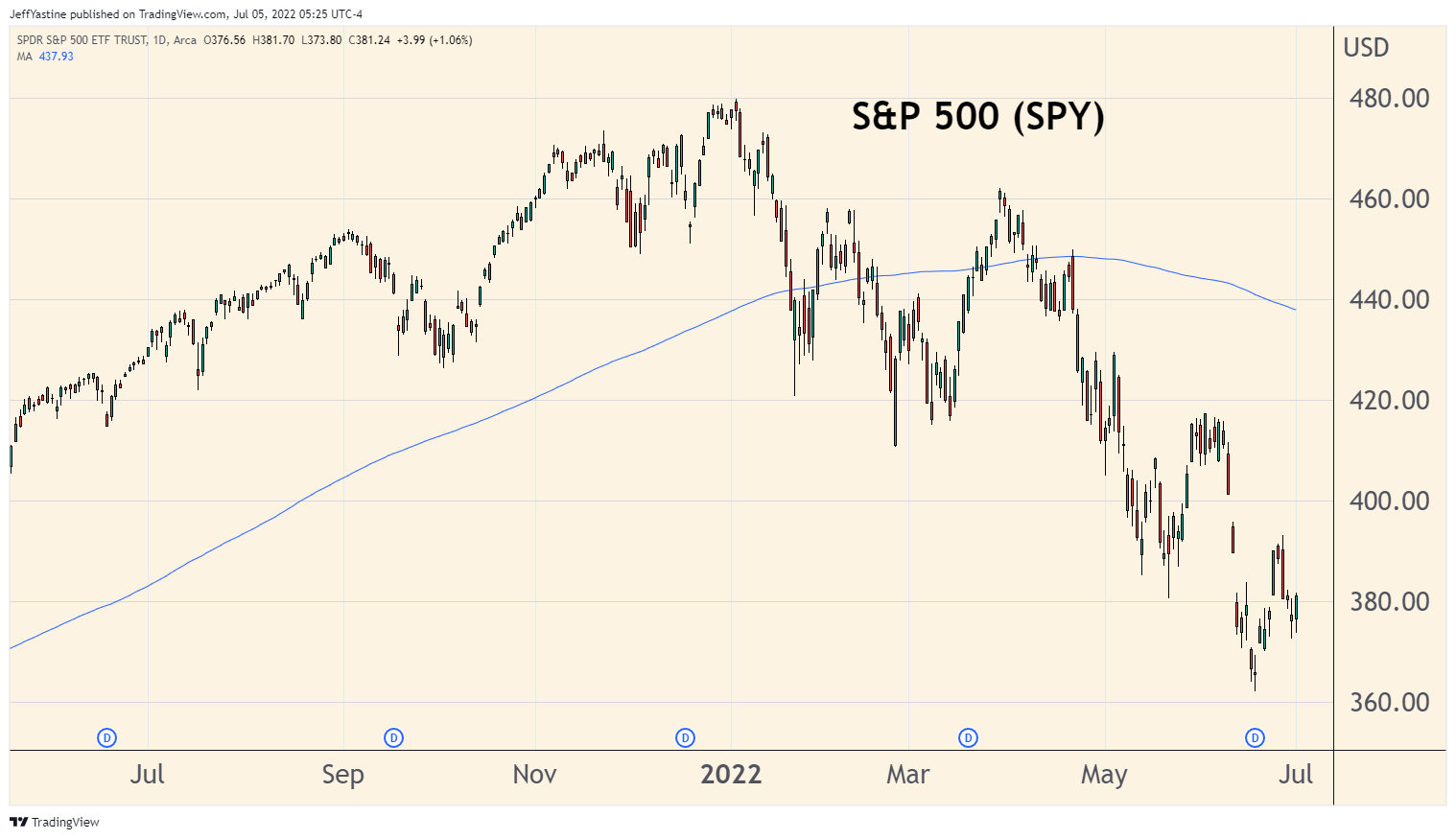
But the point we always have to keep in mind is that stock markets (and individual stocks) anticipate future events - they discount worst-case scenarios by moving down in price.
So, the faster the market falls, the sooner it's done discounting the worst of the current environment of inflation, combined with rising interest rates and the potential of an economic recession.
It's as simple as that. How will we know when that level is reached?
We'll know when our stocks move higher in spite of bad headlines and a persistent feeling that there are still more shoes left to drop.
By that admittedly fuzzy measure, as much as I hate to say this - we're not there yet.
The Trouble with Retailers (and Apple and Tesla)!
As recently as last week, I had hoped that we'd see a July rally and improving market fortunes in the second half of the year.
But the more I examine the charts of retailers like Target (TGT), Walmart (WMT) and Amazon (AMZN), as well as stocks like Apple (AAPL) and Tesla (TSLA) - geared as they are to discretionary consumer purchasing power - the more likely I think that the stock market has further to fall.
As many of you know, I believe that "price gaps" created on stock charts - either to the upside or downside - sometimes present themselves as potential targets as traders buy or sell a company's shares.
The idea is that "gaps are made to be filled" - the belief being that, sooner or later, a stock will move up or down - sometimes in extreme ways - in order to fill one of these price gaps.
Target's chart offers the best example. The stock suffered a shocking 20% overnight collapse back in May as the retailer began reporting a buildup of inventory, slowing sales, and price increases.
The shares recently filled a price gap (shaded in pink on the chart) created in late 2020 as the stock made its final run to all-time highs.
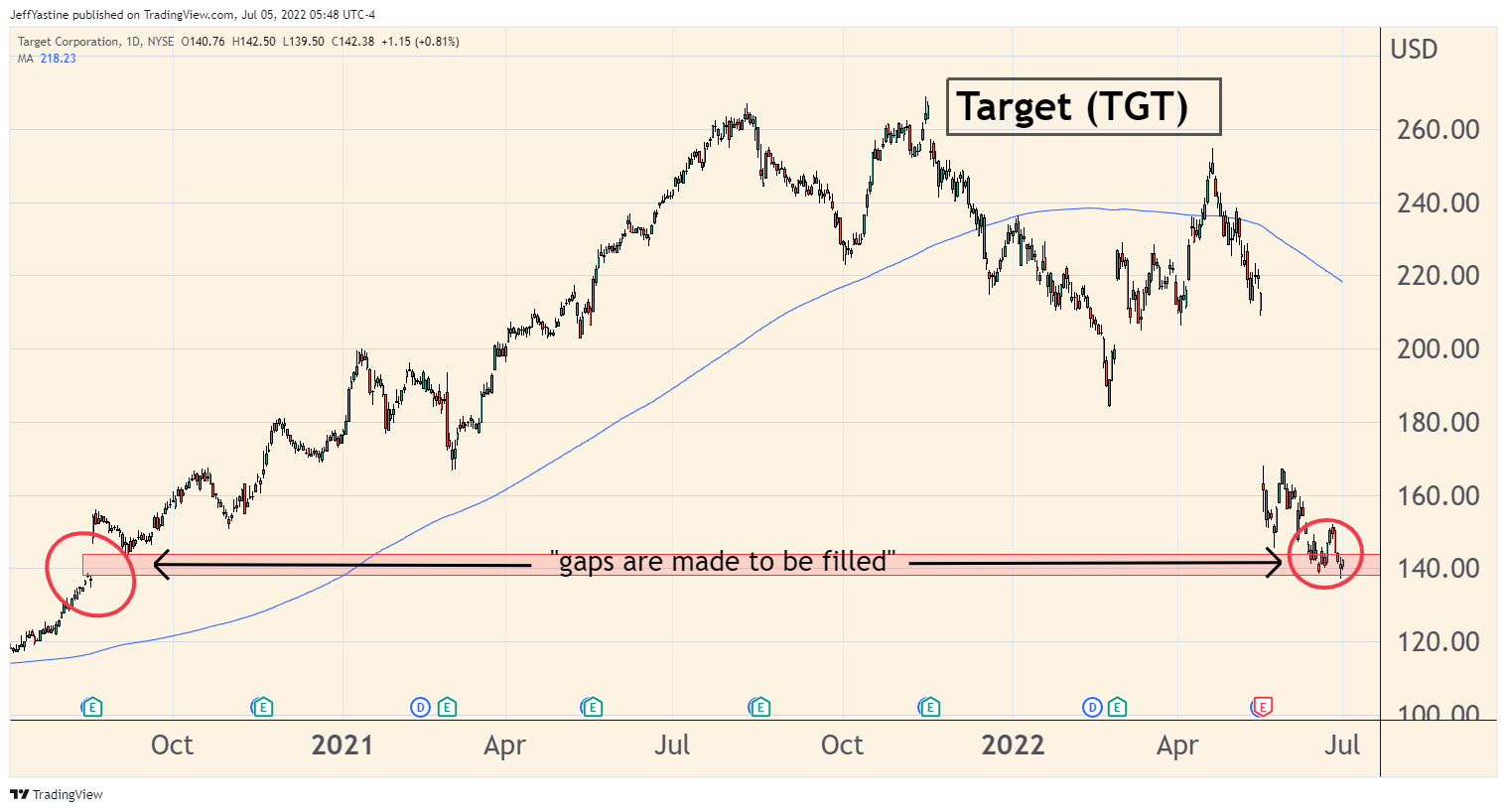
The problem, as I see it, is that Target's stock chart looks vulnerable to still-deeper declines; it has 2 other price gaps created even earlier in 2020.
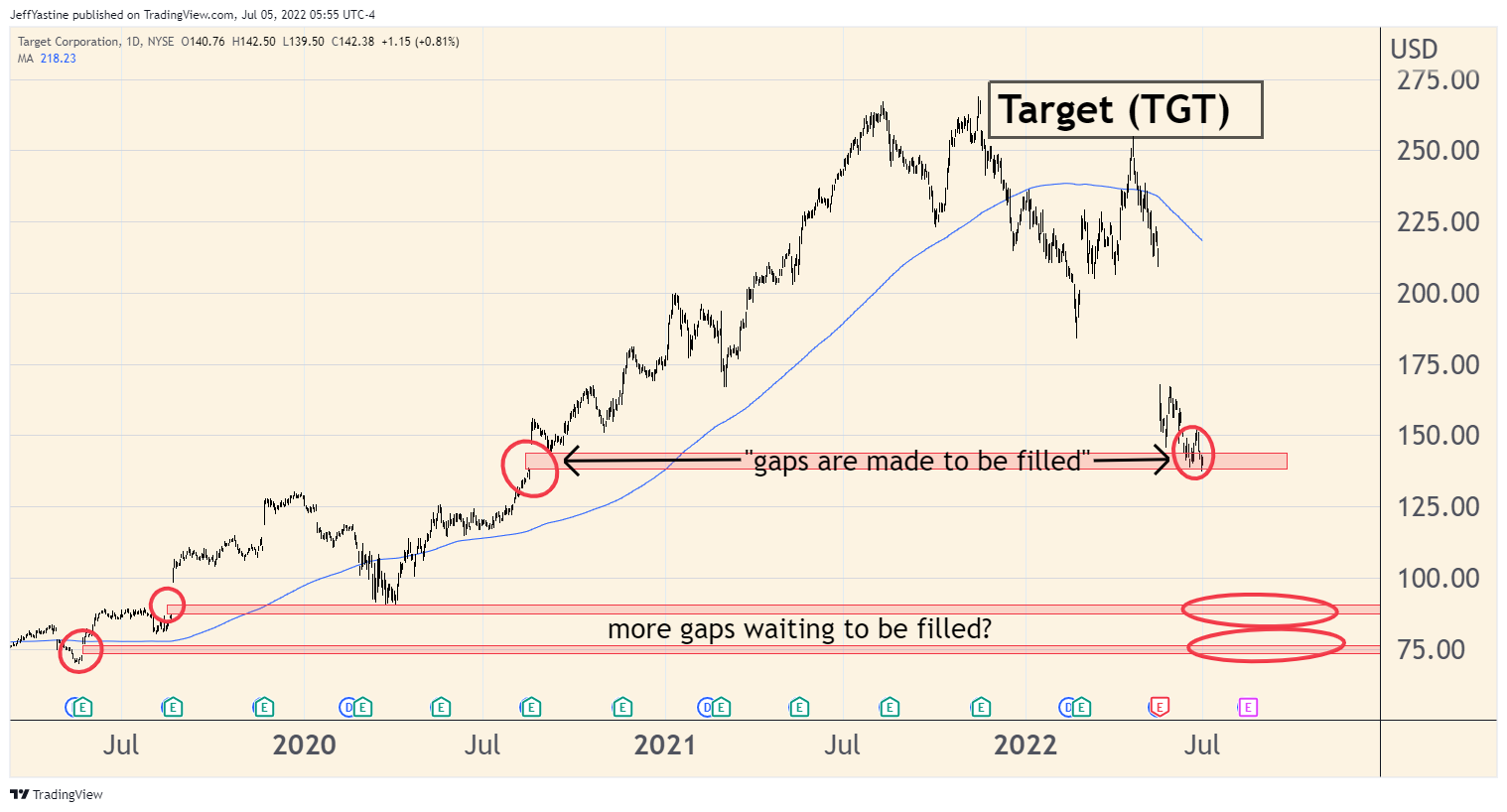
So it wouldn't take much - another after-hours announcement about ongoing consumer slowdowns and still-rising inventories - to push the stock even lower in order to fill either of those gaps, as deep as 50% below the current price of the stock.
Amazon (AMZN)'s chart bears watching as well. The stock has been buoyed of late because of its 20-for-1 stock split, and continues to hover just above a major support level at $100.
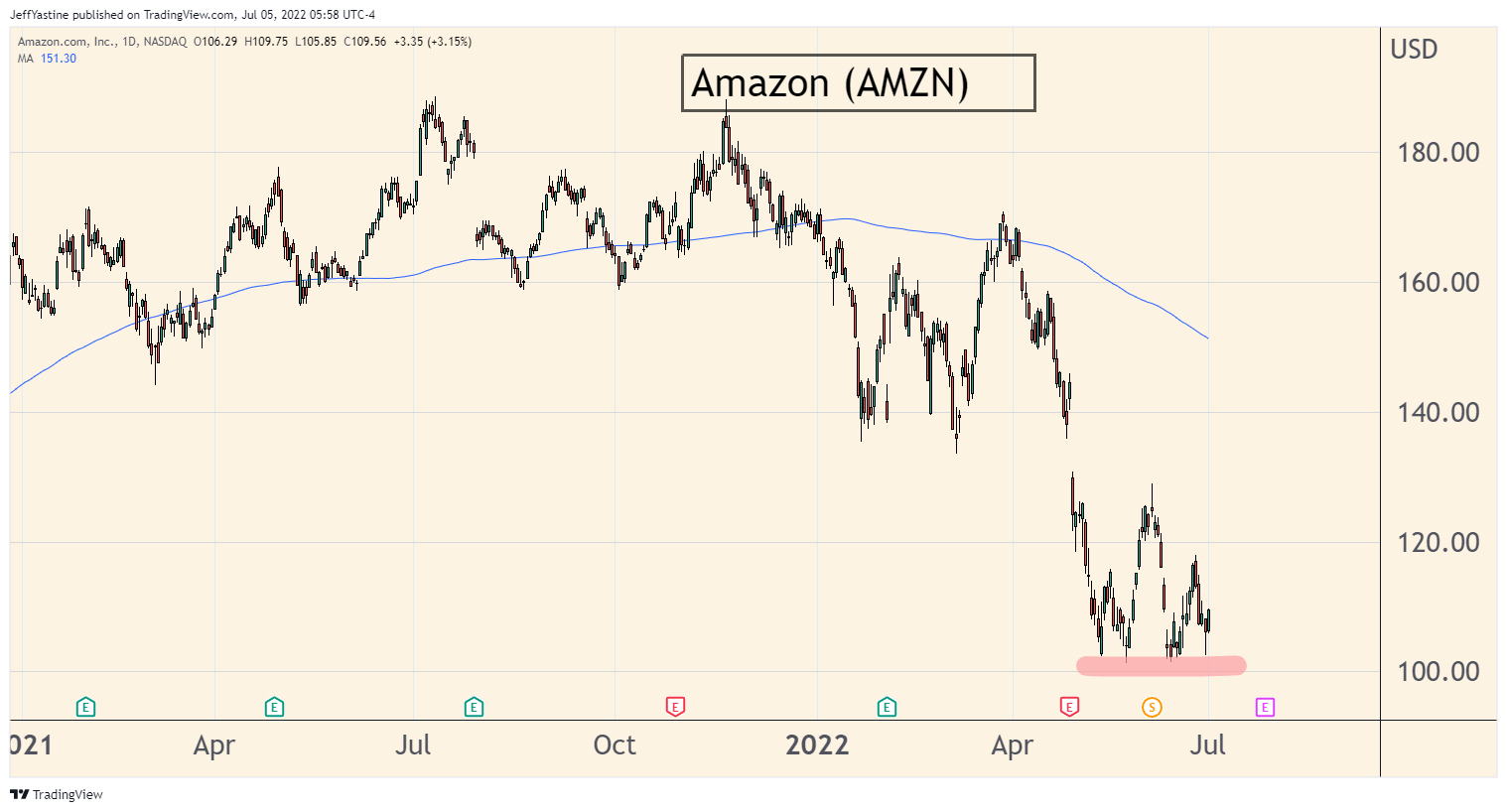
The problem is that the longer the stock lingers at that level without an improvement in the US and global economic outlook, the more likely it becomes that AMZN eventually breaks support and moves even lower.
In Amazon's case, it could in theory fall another 45% to $50 a share - and finally fill a large price gap in its chart created more than 4 years ago:
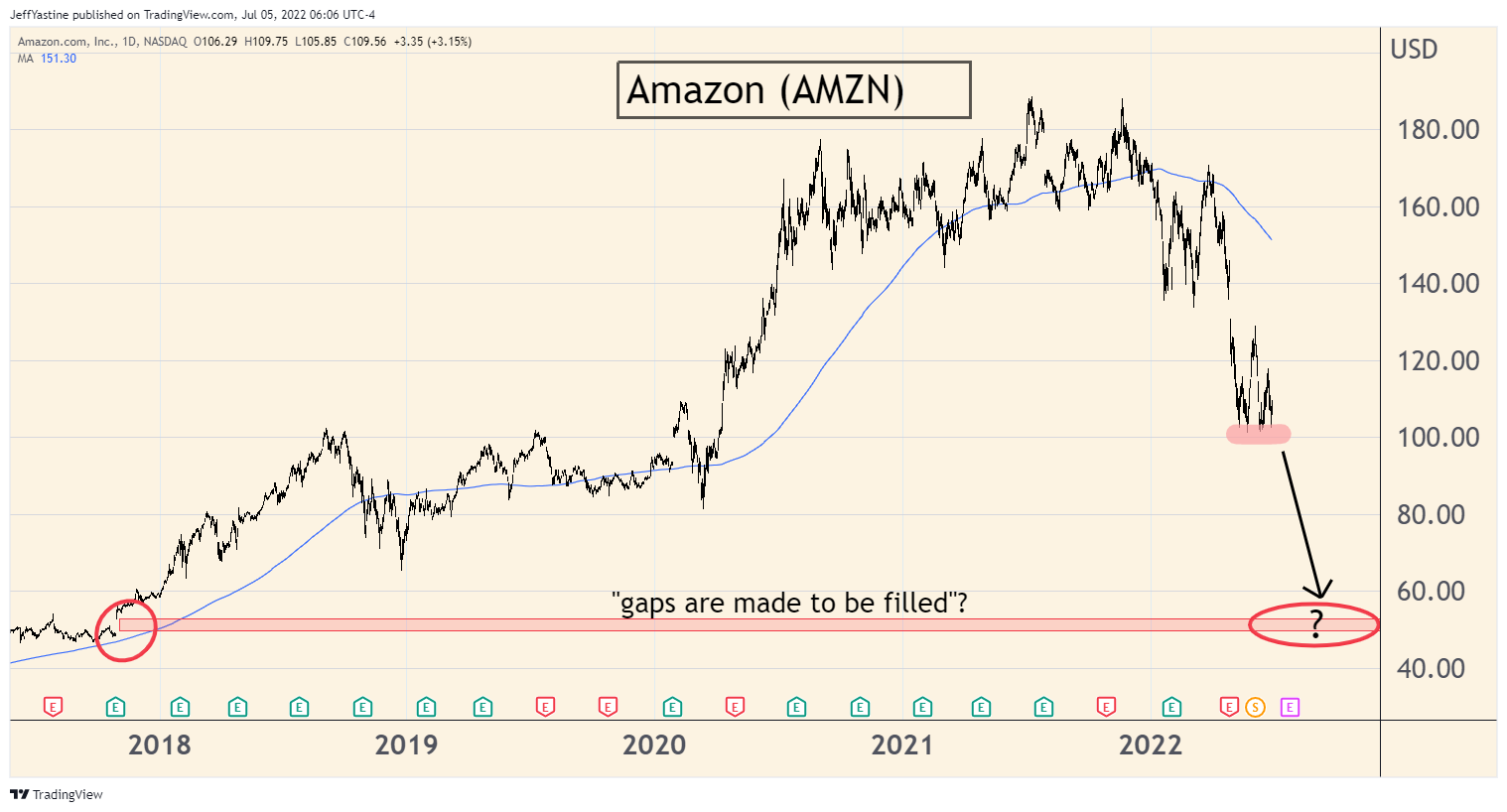
Even Apple (AAPL) and Tesla (TSLA) - the 2 strongest mega-cap stocks in the S&P 500 - have potential chinks in their armor:
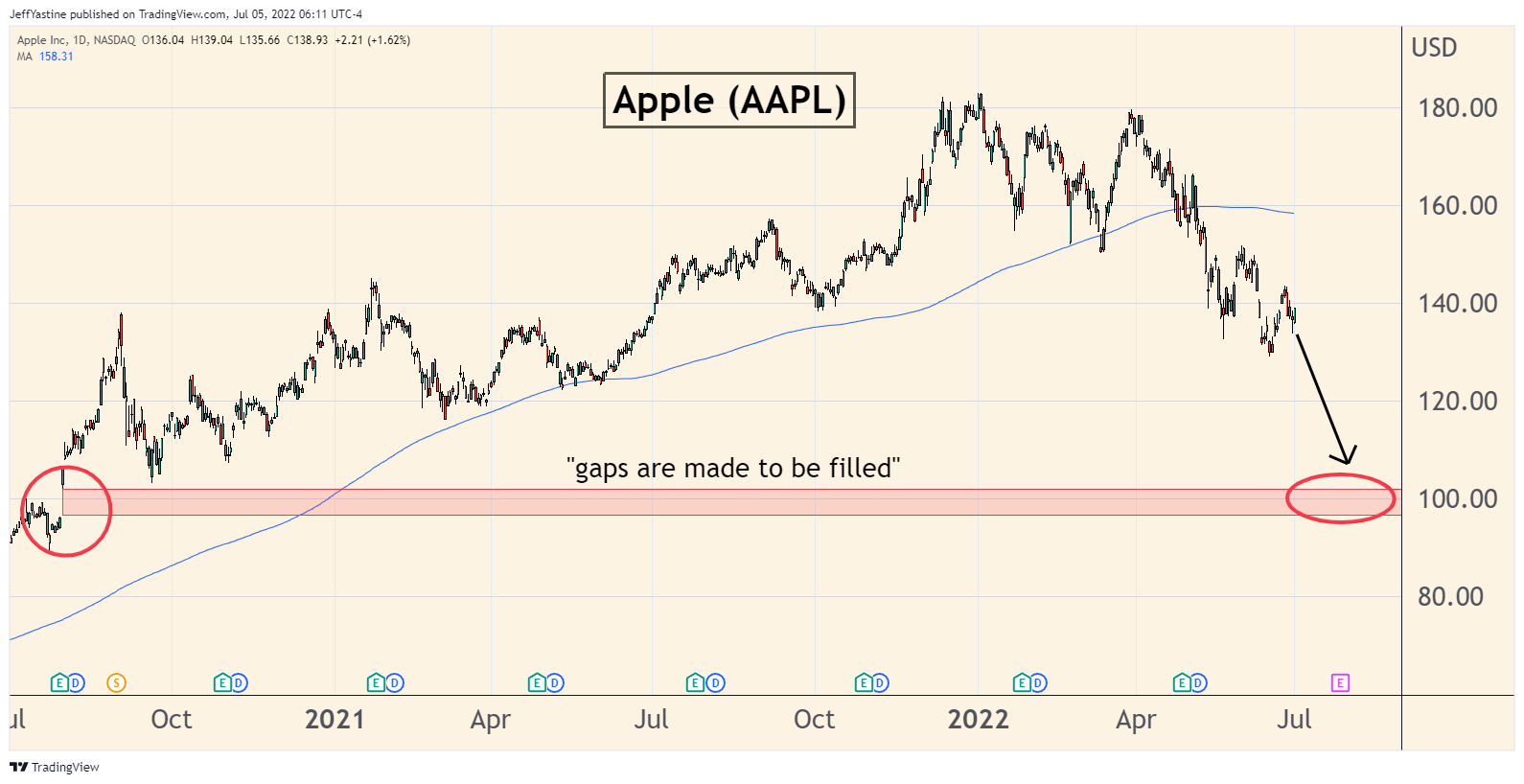
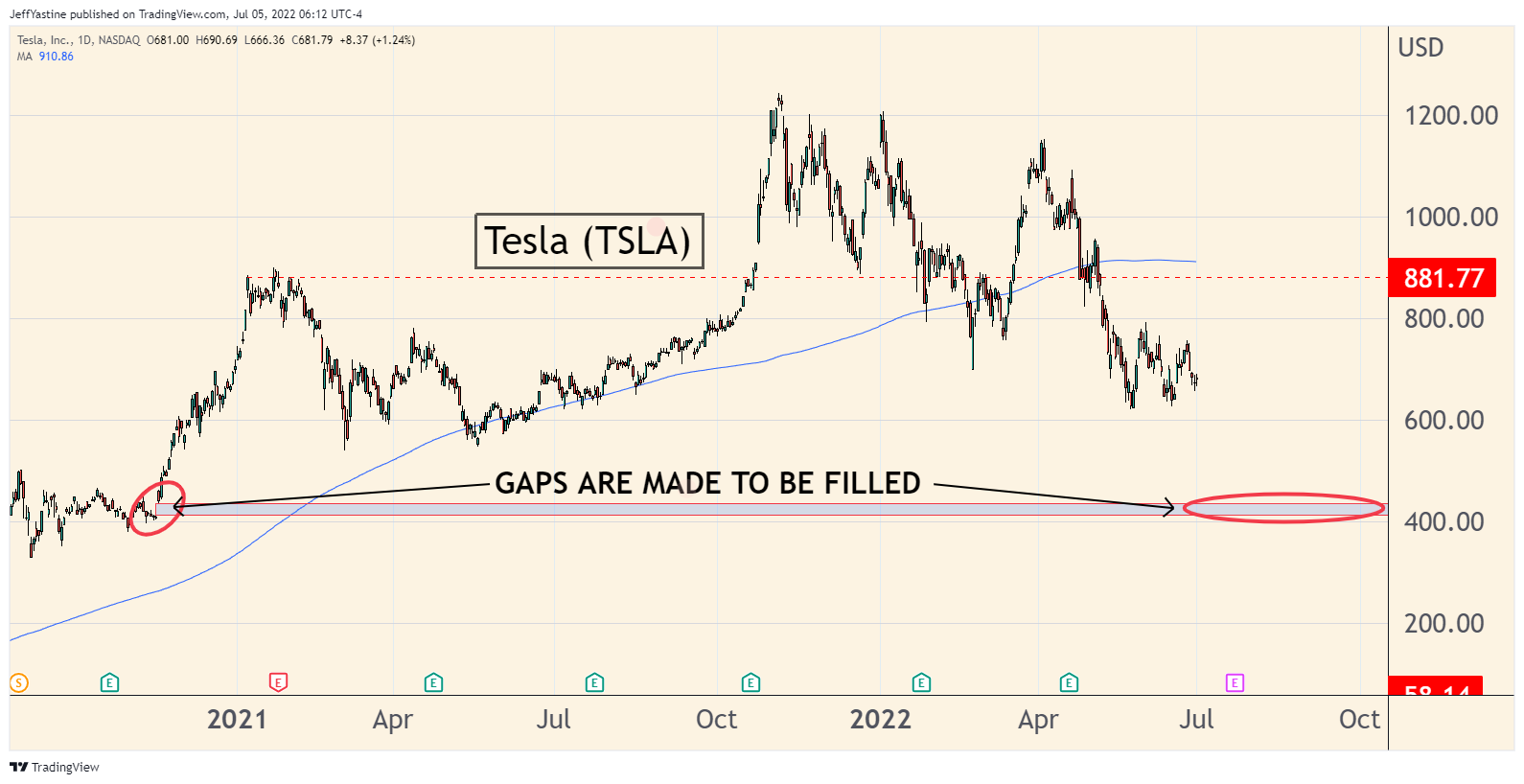
None of this is written in stone, of course. But Apple represents about 7% of the entire S&P 500's market cap. Likewise, Amazon and Tesla together have an index weighting of more than 6%.
My point is, these 3 stocks cast a very long shadow on the stock market.
When they go up, the market goes up big, and we cheer.
But when they go down, the market goes down big. We want to make sure we're prepared for that possibility, and sidestep as much of the fallout as possible.
Jeff
Member discussion